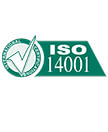E-waste has become a serious threat to our environment as more and more gadgets are thrown out after usage into dustbins. This leads to toxic pollution, as electronics break down and release heavy metals, flame retardants, and other chemicals into soil and water.
To address the problem, environmentalists have been pushing for laws in the U.S. and abroad that require companies that manufacture cell phones, computers, and other electronic gadgets to recycle their own e-waste. In fact, responsibly recycling e-waste is a growing field that is providing new green jobs and keeping toxic chemicals out of our land and water.
India is thought to process around eight hundred thousand tons of e-waste every year. However, in that country there are only a few recycling firms registered under the government to process e-waste, meaning a lot of used electronic gadgets are dismantled and dumped in the informal sector, sometimes without proper care to protect laborers or the environment from toxic components.
To stem the environmental toll, India passed a ban on importing used computers, although a lot of e-waste has still made it into the country under the auspices of donations. Combined with the large domestic source of used equipment, it’s still a heap of stuff. An environmental nonprofit called Toxics Link and Greenpeace India are working with the MAIT, Manufacturer’s Association of Information Technology, to try and create better standards for dealing with e-waste there.
The situation is similar across much of the developing world, according to a recent report by the United Nations Environment Programme. China, for instance, deals with 500,000 tons of refrigerators, 1.3 million tons of TVs, and 300,000 tons of personal computers a year. Some of that is handled in sophisticated factories, but not all.
In the United States, it’s estimated that 4 million tons of e-waste gets dumped in landfills every year, based on reports from the Environmental Protection Agency (EPA). U.S. dismantlers are much more closely regulated, although American companies and cities have long been accused of shipping material–and thus their toxic burden–overseas.
One challenge in dealing with e-waste is that it is generated post consumer, unlike more traditional industrial pollutants. This requires different legal guidelines.
Some of the benefits of e-waste recycling include:
- Conservation of natural resources:
E-waste has a lot of recoverable and valuable resources like plastics, gold, copper, aluminum, and iron. To preserve our natural resources, all e-waste should be recycled and reused instead of dumped into landfills.
- Preventing soil contamination by toxic chemicals:
E-waste can be loaded with hazardous materials like lead, chromium, mercury, chemical flame retardants, and beryllium, which can be harmful to our water and soil. Computers and servers can contain cadmium, mercury, and chromium. Flat-panel TVs and LCD screens can contain lead.
- Buy-back offers for customers:
Many computer and phone manufacturers provide buy-back offers for consumers who return their e-waste. By recycling this e-waste manufacturers are able to obtain a continuous supply of raw materials without the need for mining or further exploitation of natural resources. Consumers also enjoy the benefit of reduced pricing by committing to recycle cell phones, computers, and other common e-waste products.
- Creating new jobs:
Recycling e-waste can create jobs for people involved in professional refurbishing and recycling. It can create new markets for materials and components. Also, instead of shredding e-waste, we can donate reusable electronic devices to people who can’t afford to buy new devices. Other financial benefits due to e-waste recycling include minimization of transportation costs involved in movement of raw materials from one place to another and associated labor costs.
- Energy efficiency:
One of the biggest advantages of recycling e-waste is considerable reduction of energy requirements. The energy cost involved in e-waste recycling is comparatively less than the cost involved in mining and processing of new materials from soil. For example, recycling of aluminum will take ninety-five percent less energy than production of fresh aluminum from raw materials. Recycling of plastics can save up to 70% energy, recycling of glass up to 40% energy, while recycling of steel can save up to 60% energy.
E-waste recycling also helps reduce air pollution, greenhouse gas emissions, and dependence on oil.
The typical steps involved in e-waste management include:
- Reusing of operational units by donating it to people who can’t afford to buy new devices
- Refurbishment/repair of usable components
- Reuse and recovery of components and peripherals
- Recycling the remaining e-waste that cannot be used directly
- Proper and safe disposal of remaining unusable e-waste in landfills without impacting the nearby ecosystem and population.
Conclusion:
E-waste can be a serious threat if it is not handled properly. By proper recycling of e-waste we can save a lot of energy and valuable natural resources.
Source: Drew Hendricks in Growing Green Jobs, August 6, 2012
| Source / Medium | Visits | Pages / Visit | Avg. Visit Duration | % New Visits | Bounce Rate |
| google / adwords | 1906 | 2.99 | 54.14 | 92.29% | 37.41% |
| google / organic | 1644 | 3.90 | 97.80 | 85.77% | 34.55% |
| (direct) / (none) | 933 | 4.16 | 121.59 | 79.21% | 24.87% |
| saswma.org / referral | 176 | 4.50 | 95.07 | 94.89% | 27.84% |
| bing / organic | 105 | 5.27 | 172.50 | 81.90% | 11.43% |
| epawebapps.epa.state.oh.us / referral | 93 | 5.05 | 131.39 | 90.32% | 31.18% |
| yahoo / organic | 83 | 4.76 | 74.05 | 90.36% | 25.30% |
| r2solutions.org / referral | 56 | 4.77 | 98.63 | 80.36% | 16.07% |
| blog.cleveland.com / referral | 53 | 6.87 | 143.45 | 90.57% | 13.21% |
| linkedin.com / referral | 45 | 3.53 | 48.78 | 80.00% | 33.33% |
| TOTAL | 5354 | 3.74 | 89.14 | 86.81% | 32.31% |






